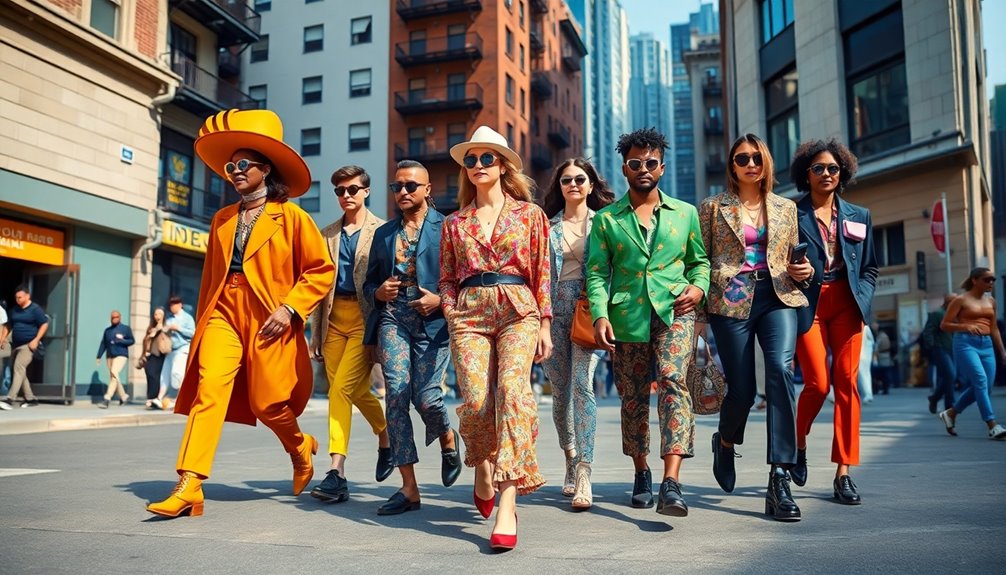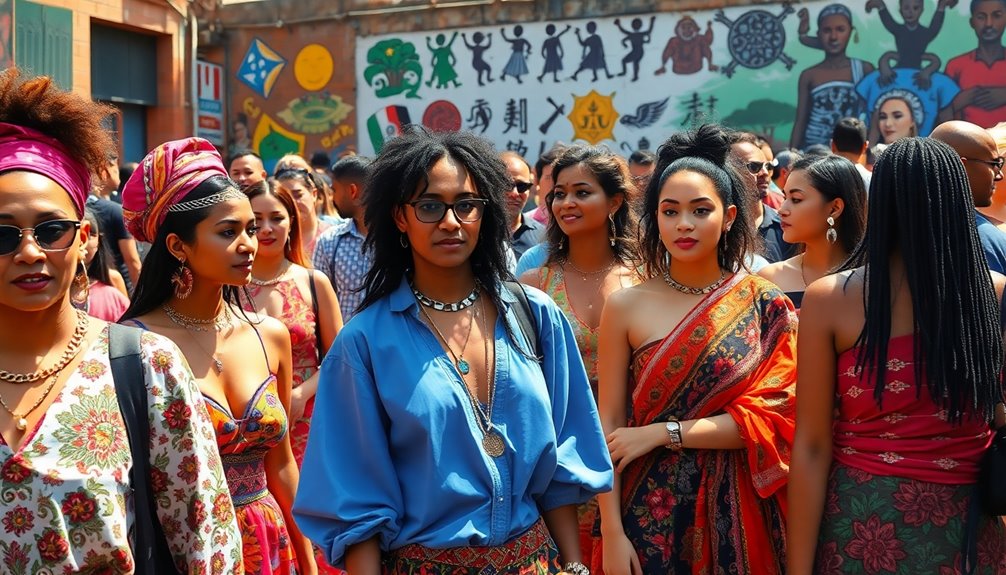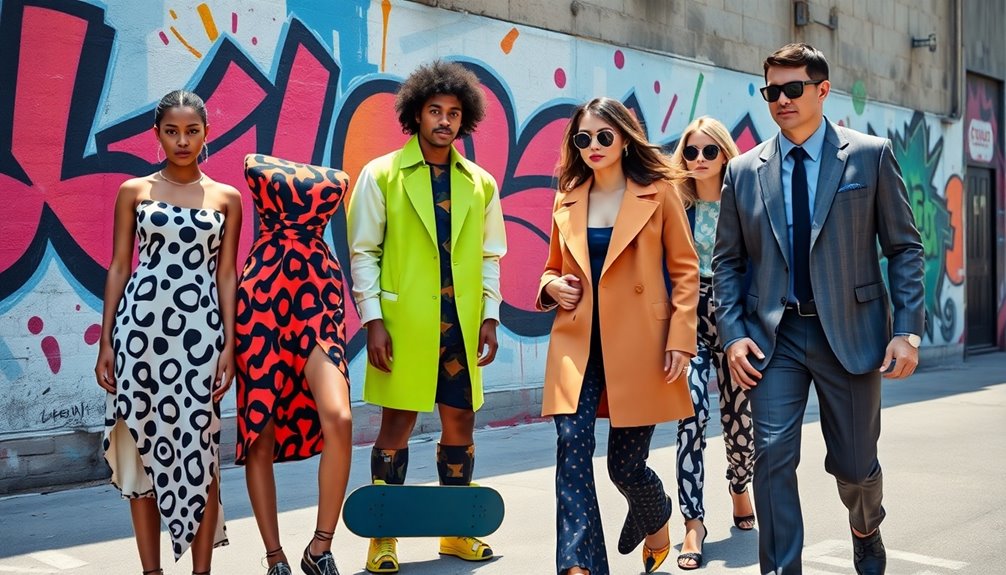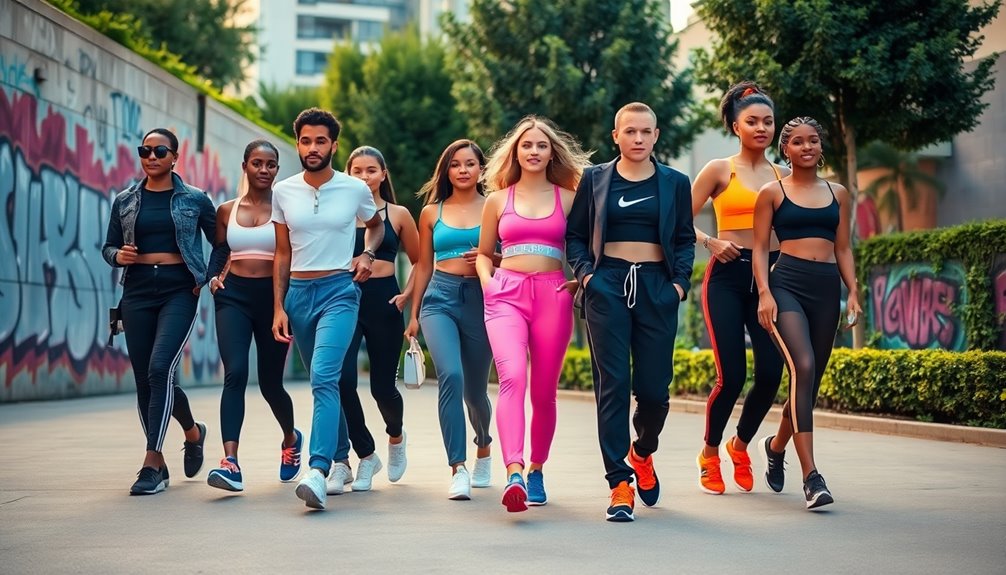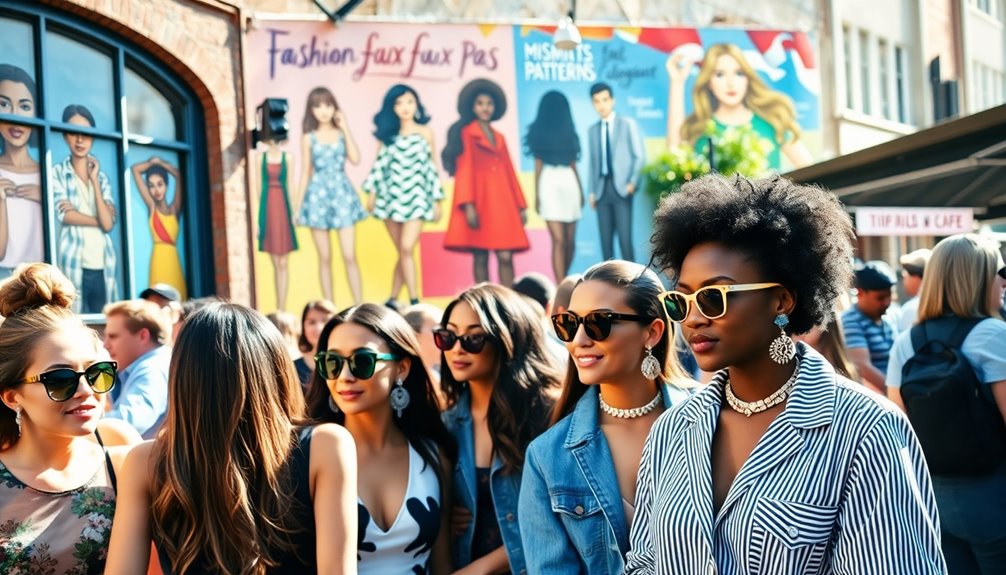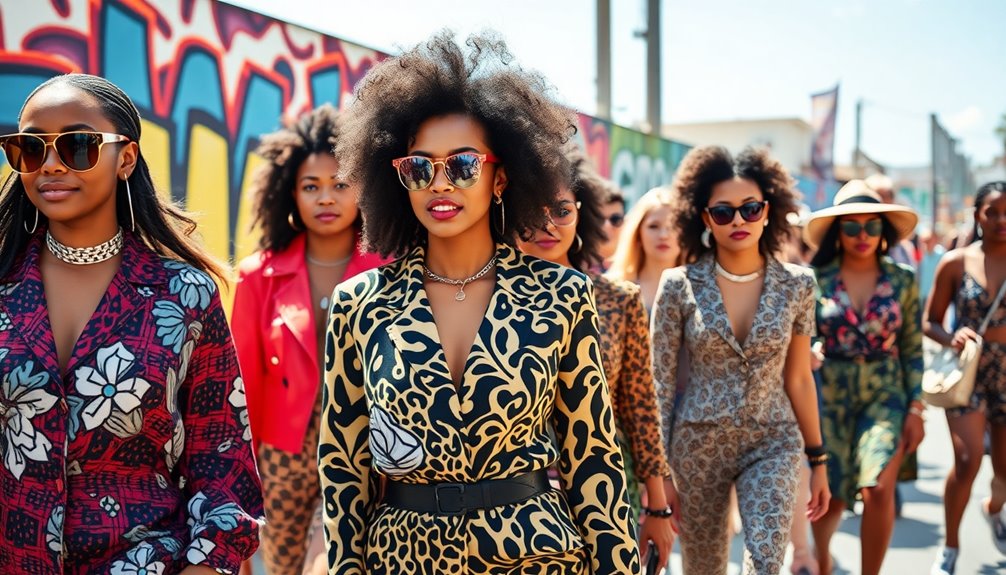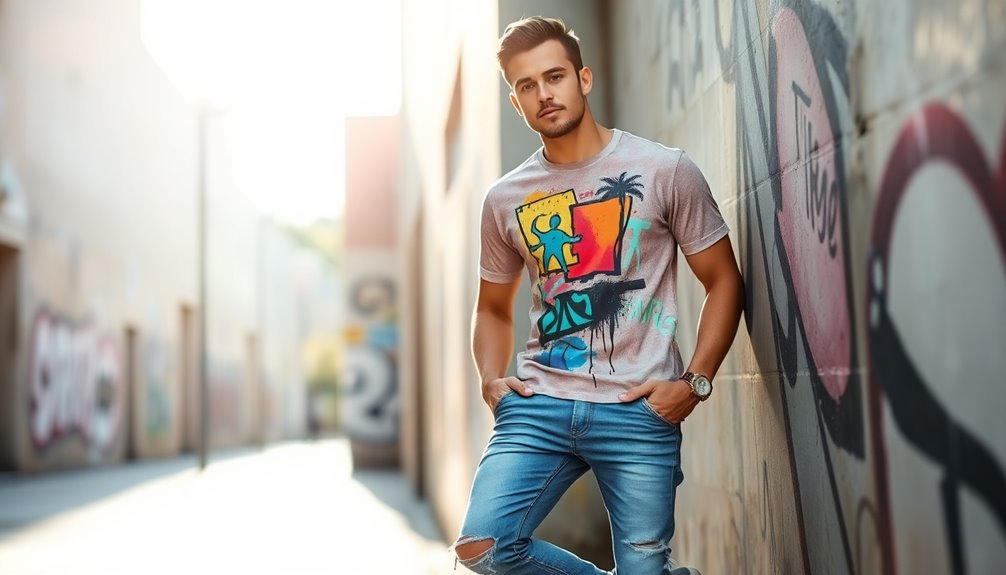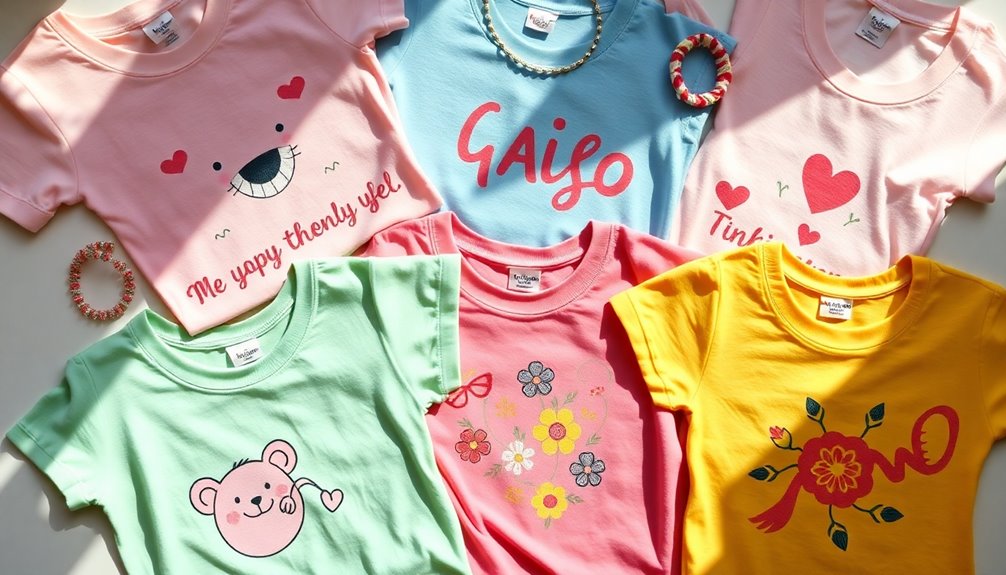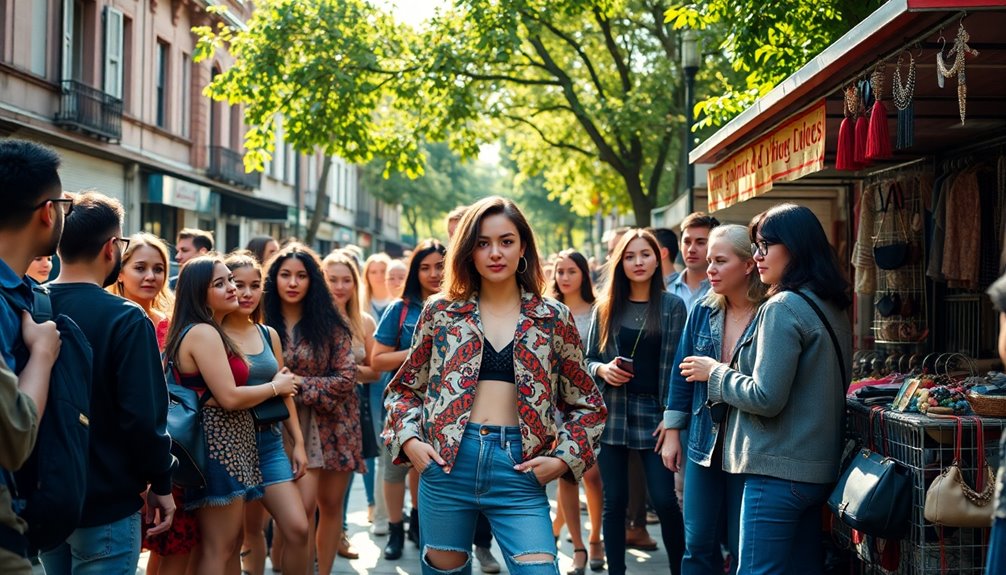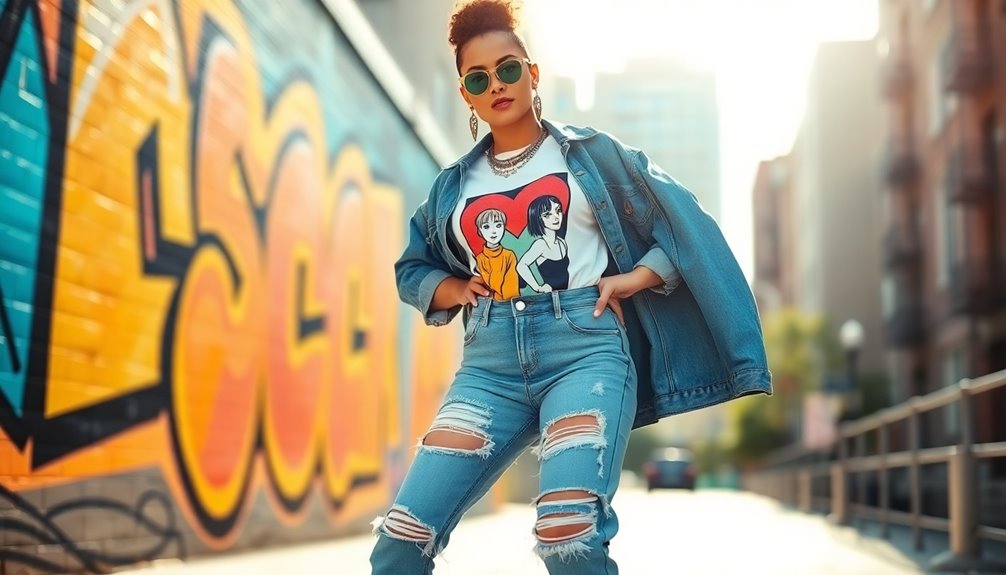Being fashion forward means you embrace the latest trends and innovative designs that challenge the norm. It's about making bold choices, whether it's through unique silhouettes, bright colors, or unconventional materials. This approach reflects your individuality and responds to cultural changes, promoting authenticity in personal style. Fashion forward individuals anticipate future trends while driving industry shifts towards sustainability and inclusivity. Designers and technology play a significant role by pushing the boundaries of creativity. If you're curious about how this concept influences the fashion landscape today, there's much more to uncover about its depth and evolution.
Definition of Fashion Forward
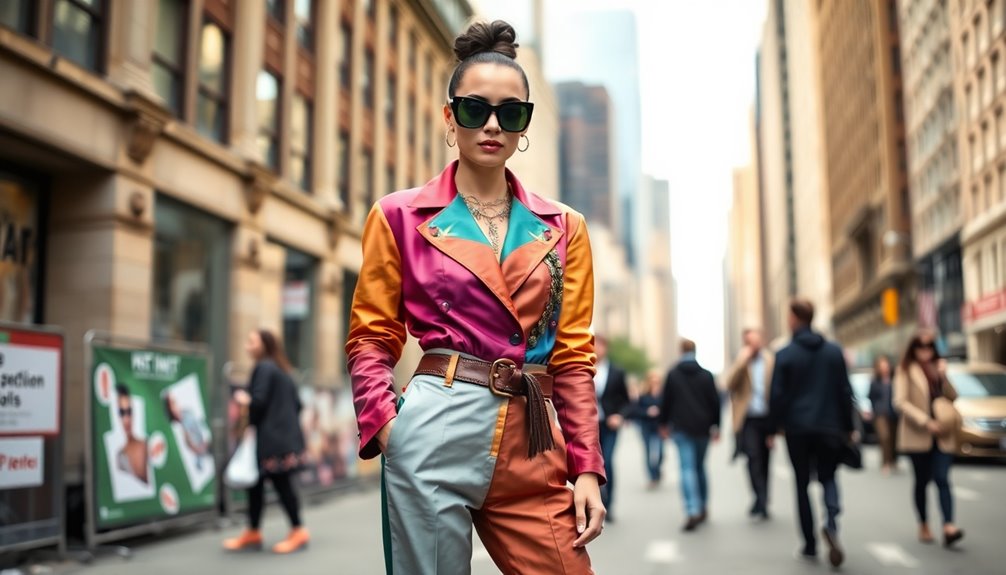
Fashion-forward styles are all about embracing the latest trends and breaking away from the ordinary. The term "fashion-forward" refers to clothing and styles that reflect contemporary innovation and creativity in the fashion industry.
Since its origin in 1937, being fashion-forward means you're proactive in your fashion choices, often acting as a trendsetter. You recognize unique silhouettes, unconventional materials, and bold colors that set you apart from mainstream trends.
This concept isn't just about following current styles; it's about anticipating future trends and pushing traditional fashion boundaries. By embodying this mindset, you greatly influence consumer preferences and the marketing strategies of the fashion industry, showcasing your role in shaping its ever-evolving landscape.
Characteristics of Fashion Forward Styles

When you think of fashion forward styles, you'll notice their unique silhouettes and unconventional materials that set them apart.
Bold colors and eye-catching patterns play a significant role, making statements that reflect individuality.
These elements combine to create a fresh, dynamic approach to style that's all about standing out.
Unique Silhouettes and Materials
In today's fashion landscape, unique silhouettes and innovative materials stand out, redefining how we perceive style. Designers are pushing boundaries by embracing exaggerated proportions and asymmetrical designs, making statements that resonate with individuality. You'll find garments crafted from unconventional materials like recycled fabrics and high-tech textiles, promoting sustainability while enhancing comfort. The rise of Nike Tech demonstrates how innovative materials can enhance both athletic performance and aesthetics in fashion.
| Unique Silhouettes | Innovative Materials |
|---|---|
| Exaggerated shapes | Recycled fabrics |
| Asymmetrical designs | High-tech textiles |
| Layered structures | Innovative textiles |
| Fluid lines | Sustainable materials |
| Bold dimensions | Smart textiles |
These elements encourage you to express your unique identity, inviting you to explore fashion that truly reflects who you are.
Bold Colors and Patterns
Bold colors and patterns play a significant role in defining contemporary style, complementing the unique silhouettes and innovative materials that have become staples in fashion.
When you embrace bold colors and patterns, you're stepping away from conventional aesthetics, letting your outfits stand out in any crowd. Bright, vibrant hues and contrasting designs reflect your creativity and desire for individual expression.
Designers often push boundaries with unconventional color combinations and intricate patterns, creating visually stimulating effects. Striking prints, like geometric shapes or abstract designs, are characteristic of fashion-forward pieces, making them essential for anyone looking to elevate their wardrobe.
Seasonal trends consistently highlight bold colors and patterns, encouraging you to adopt adventurous, unique styles that truly express your personality.
Influence of Designers on Trends
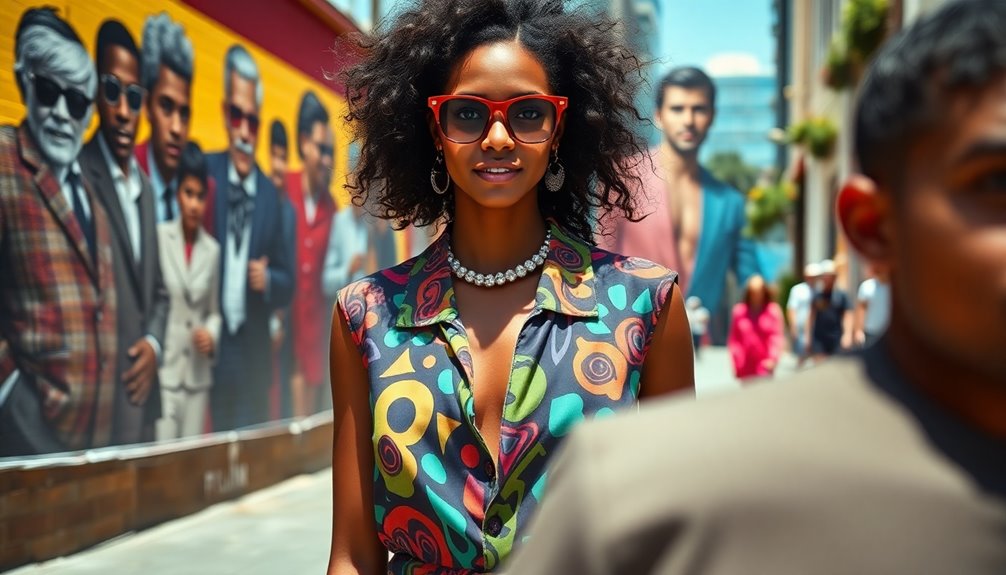
While many factors shape fashion trends, designers stand at the forefront, driving innovation through their runway presentations. Their creative expressions introduce new silhouettes, colors, and materials, making them pivotal in fashion history.
Fashion weeks serve as essential platforms for showcasing these trends to buyers and media, with high-profile designers forecasting upcoming styles.
You might notice:
- High street brands reinterpret runway designs for everyday wear.
- Technology, like 3D printing, is revolutionizing fashion thanks to forward-thinking designers.
- Cultural movements inspire collections, influencing consumer preferences.
- Designers often reflect contemporary issues through their work.
- The influence of designers on trends shapes industry standards and styles.
Embracing these innovations helps you stay fashion-forward!
Personal Style and Expression

Designers set the stage for new trends, but how you interpret these influences shapes your personal style. Your journey in developing personal style is unique, influenced by your cultural background, experiences, and the ever-evolving fashion landscape.
Embracing fashion-forward concepts encourages you to experiment with bold colors, unconventional materials, and unique silhouettes that reflect your identity. Striking a balance between runway inspiration and personal adaptation lets you express yourself authentically while staying relevant.
Self-expression through fashion is essential; it showcases your personality and boosts your confidence. Look to fashion icons, social media, art, and literature as sources of inspiration to help you interpret and adopt fashion-forward elements that resonate with your personal style and vision.
Fashion as a Cultural Reflection
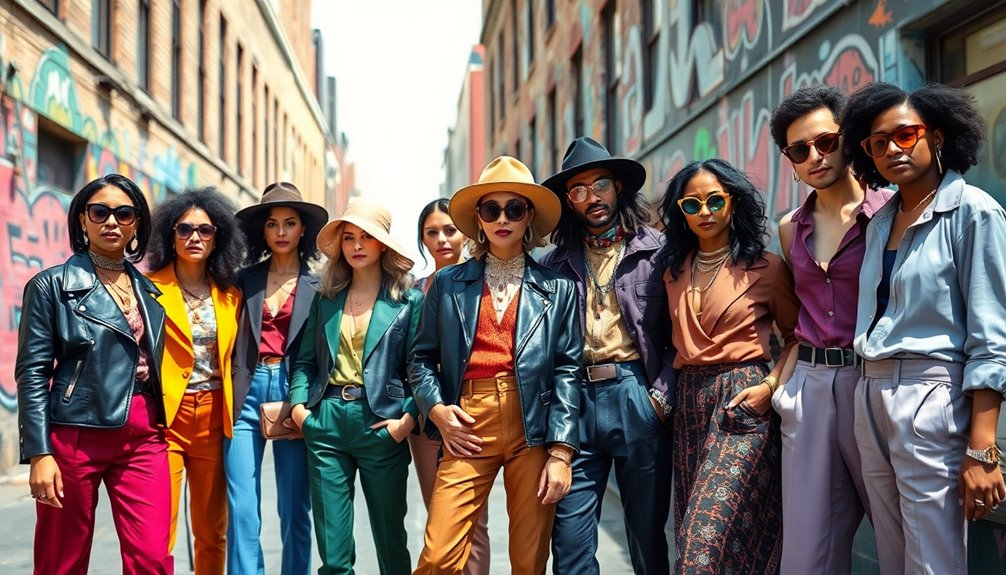
Fashion not only showcases individual creativity but also mirrors the societal values and cultural shifts of its time. It's an essential part of how you understand the world around you. Trends often reflect changes in attitudes towards gender, identity, and social issues. For instance, styles like the mini skirt symbolize liberation during the 1960s.
In today's landscape, you'll notice that:
- Fashion weeks highlight contemporary cultural phenomena.
- Designs focus on sustainability and inclusivity.
- Social media amplifies personal expressions of style.
- Past trends resurface, reinterpreting cultural narratives.
- Fashion serves as a dialogue about current societal issues.
In this way, fashion isn't just about aesthetics; it's a dynamic reflection of culture and values.
Historical Context of Fashion Trends
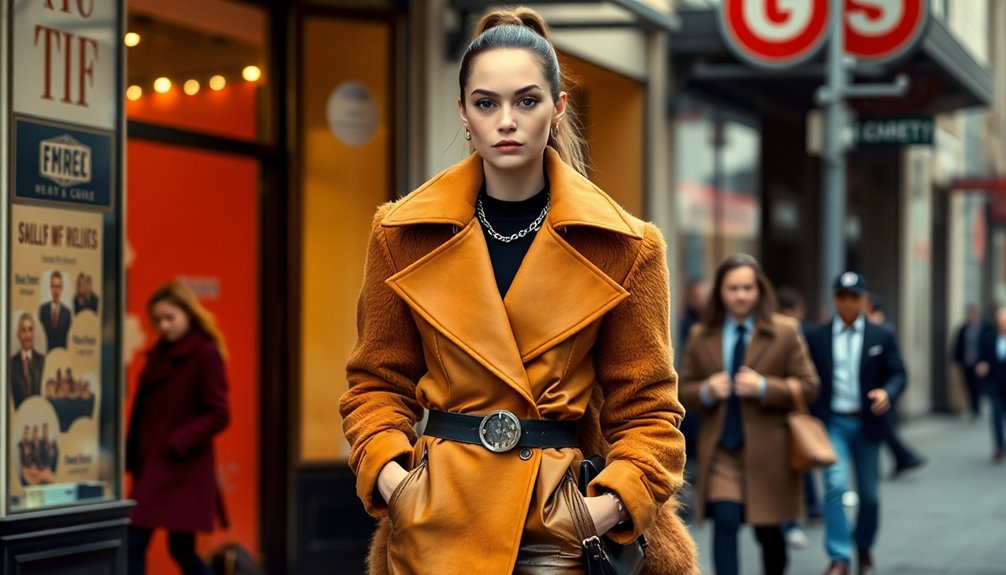
As trends have shifted over the decades, they've often reflected the broader historical and social contexts of their time.
For instance, Dior's New Look in 1947 transformed women's fashion, setting a new standard that influenced future designs.
In the 1960s, the mini skirt, popularized by Mary Quant, marked a cultural shift towards youth-oriented fashion, mirroring changing social norms.
Today, current fashion frequently draws inspiration from these iconic styles, showcasing a continuous dialogue between history and modernity.
Early adopters and trendsetters remain essential, as their choices pave the way for wider acceptance of emerging styles.
Ultimately, rapid changes in fashion illustrate how societal events, from economic downturns to cultural movements, consistently shape the evolution of trends. Additionally, the use of butter sculptures in contemporary art reflects how culinary practices can influence fashion, emphasizing the interconnectedness of creative expressions.
Impact on the Fashion Industry
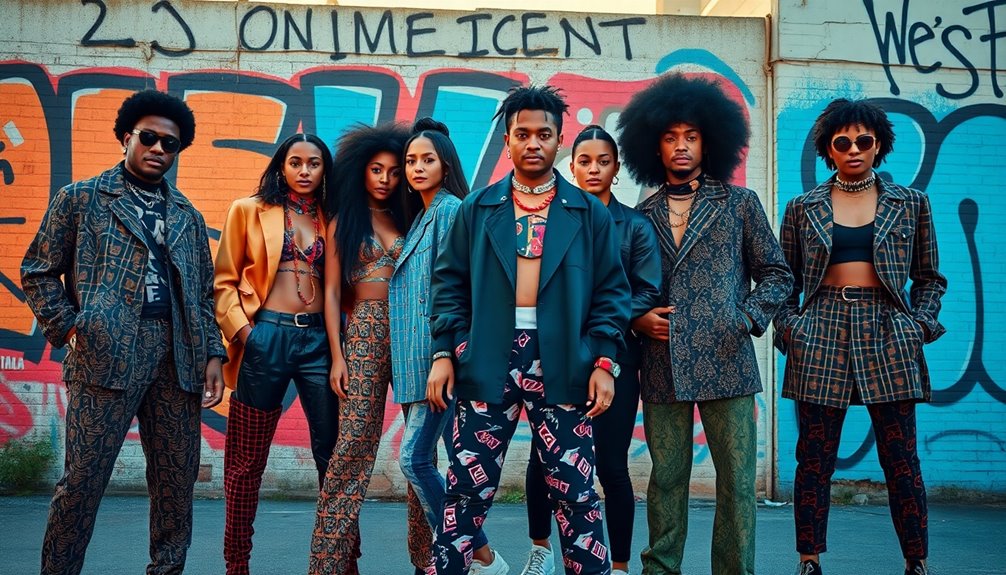
Fashion-forward concepts directly influence what you see on the runways and in stores, pushing designers to create unique styles that align with your changing tastes.
Social media amplifies these trends, allowing you to share and discover new looks that reshape the fashion landscape.
As you engage with these platforms, your preferences drive brands to adapt and innovate, making the fashion industry more dynamic than ever.
Consumer Trends Influence Design
While trends evolve rapidly, designers must adapt to consumer preferences to stay competitive in the fashion industry. Understanding consumer trends is essential for creating relevant collections.
As a consumer, you play a significant role in this dynamic landscape. Brands are responding to your demands for sustainability, inclusivity, and diversity in design.
Here's how consumer trends influence design:
- Eco-friendly materials are prioritized.
- Designers use data analytics to predict preferences.
- Collections cater to various body types and genders.
- Quick responses to viral styles keep brands relevant.
- Ethical production practices are increasingly emphasized. Additionally, astrological compatibility can influence individual style preferences, as consumers may gravitate towards fashion that resonates with their zodiac traits.
Social Media Amplifies Trends
With social media reshaping how trends spread, the fashion industry has entered a new era of instant influence and accessibility. Platforms like Instagram and TikTok allow you to share styles in real-time, turning local trends into global sensations almost overnight.
Social media amplifies trends through influencer culture, where micro and nano influencers engage audiences more effectively than traditional ads. Viral challenges, such as "TikTok made me buy it," demonstrate how quickly a fashion item can gain traction.
Brands are now using social media analytics to understand consumer behavior and tailor their offerings, embracing diverse voices and styles. This democratization of fashion not only challenges norms but also promotes acceptance of various aesthetics, making the industry more inclusive than ever.
Critiques of Fashion Forward Concepts
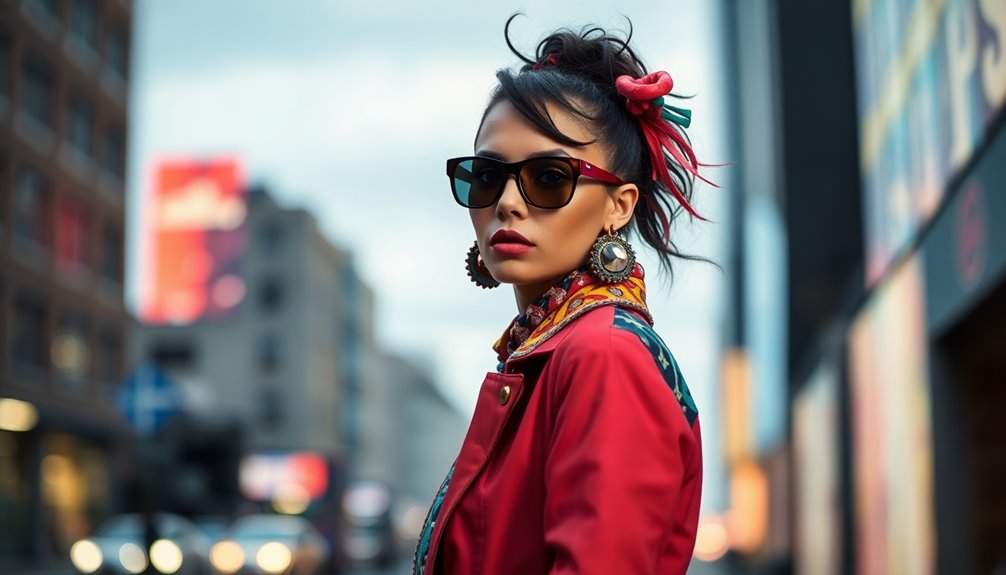
Critics often highlight that the term "fashion forward" is overused and ambiguous, making it hard to pinpoint what true innovation in design really means.
You might feel pressured to conform to industry trends, which can stifle your own creativity and authenticity.
In today's digital age, the rapid spread of trends raises questions about the sustainability of what's deemed fashion forward.
Many items labeled as such often recycle past styles, lacking originality.
Additionally, the focus on being fashion forward can overshadow crucial conversations around ethical production and sustainability.
- Overuse leads to confusion
- Pressure to conform stifles creativity
- Rapid trend cycles create sustainability issues
- Derivative designs lack originality
- Ethical discussions are sidelined
Future Considerations in Fashion

As the fashion industry evolves, it's crucial to take into account how sustainability and ethical practices will shape its future. Consumers are increasingly demanding transparency in sourcing and production, pushing brands to adopt more responsible practices.
Technology, like virtual and augmented reality, will revolutionize how you shop, offering digital fashion alternatives that reduce waste. As trends cycle, expect designers to reinterpret past styles while innovating with fresh ideas.
Social media's influence on fashion trends will only grow, urging brands to quickly adapt to your changing preferences. Emerging designers are prioritizing authenticity and individuality, allowing personal expression to take center stage, which could redefine what it means to be fashion-forward in the years to come.
Frequently Asked Questions
What Is the Concept of Fashion Forward?
The concept of fashion forward involves styles that anticipate and embrace future trends.
You'll notice that fashion forward pieces often feature unique silhouettes and unconventional materials, allowing you to express your individuality.
By stepping away from mainstream conventions, you showcase creativity and innovation.
This approach pushes the boundaries of traditional fashion, inviting you to experiment with bold colors and designs that may not yet be widely accepted, but resonate with your personal style.
Who Is a Fashion Forward Person?
A fashion-forward person is someone like you, who embraces emerging trends and showcases a unique style that stands out.
You anticipate what's next, blending innovative designs with your personal flair. You're not afraid to experiment with bold colors and unconventional materials, setting yourself apart from the mainstream.
How to Be Fashion Forward?
To be fashion-forward, you've gotta keep your eyes peeled for the latest trends.
Picture browsing through social media, catching glimpses of runway shows, and spotting influencers rocking unique styles.
Mix in bold colors and unconventional materials to create standout outfits that scream originality.
Don't shy away from eco-friendly choices, either; sustainability's a key player in today's fashion.
Ultimately, trust your instincts and blend high-fashion pieces with your everyday looks to showcase your individuality.
What Is the Meaning of Fashion Concept?
Fashion concepts are the ideas and themes that shape clothing design. They influence how you perceive aesthetics, functionality, and cultural significance.
When you explore elements like color, silhouette, texture, and pattern, you create a visual language that speaks to your style.
Conclusion
Being fashion forward isn't just about wearing the latest trends; it's about embracing your unique style and expressing who you are. As you step into this vibrant world, remember that fashion reflects culture, history, and personal stories. Like a kaleidoscope, it constantly shifts and evolves, offering endless possibilities for creativity. So, take bold steps, trust your instincts, and let your wardrobe be a canvas for your individuality. After all, true style is a journey, not a destination.
